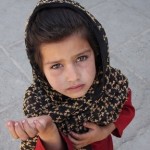AMBASSADOR HASAN HABIB
Since Pakistan-China announced the CPEC project in July 2013, it has drawn more attention than any other infrastructure in the World. The pro-CPEC elements touted it as a games changer while those opposing it called it a “Debt Trap”. The economic failure of Sri Lanka further emboldened the anti-CPEC lobby to claim that Chinese investments are a debt trap for developing countries.
After 10 years of CPEC launch, it is time to analyze facts related to this huge infrastructure project. This article will look at success and failure of CPEC and try to map challenges being faced by this “flagship project” of the One Belt One Road (OBOR) initiative, specially focusing on the political challenges to it.
CHINA-PAKISTAN ECONOMIC CORRIDOR THE NEED
The China-Pakistan Economic Corridor (CPEC) is the pilot project of China’s Belt and Road Initiative (BRI) also called the One Belt One Road (OBOR). This is China’s first foreign government project that promotes the economic development of another country along the Silk Road. Analyzing the Chinese and Pakistani experiences during the development and operational stages of the CPEC provides valuable insights that help us understand the political economy of the BRI.
China has already made heavy overseas investments through the BRI to promote economic development in developing countries. For China, in the face of increasing economic difficulties, the essence of the BRI is to defend free trade by opening new international markets and find new opportunities for growth. Also, China considers a turn toward Eurasia as vital to the avoidance of direct conflicts with traditional sea powers.
The CPEC is geo-economic and an all-inclusive project. It as a geo-economic project attaches importance to the shared interests and cooperation among nation states in international relations and emphasizes the search for win-win solutions.
With long coastlines and vast inland territories, China’s geological location boasts strategic advantages in geo-economics. Western China is connected to Central and South Asia and is not far away from the resource rich Middle East. So BRI and CPEC connect countries of abundant energy, resources, population, capital, and technology, Eursasian railways and roads can mobilize production factors and further improve the relative global economic and political status of these countries.
BENEFITS FOR PAKISTAN
Pakistan was severely energy deficient and needed support to fill that gap. The CPEC’s four elements namely a) Gwadar (including port and city and Gwadar region socio-economic development) b) Energy (Coal, Hydel, Wind, Solar, LNG, Transmission) c) Transport Infrastructure (Road, Rail, Aviation) d) Investment & Industrial Cooperation (Gwadar Free Zone and other industrial parks to be finalized) properly suited it. Also being the biggest ever investment project it made high-lights in Pakistan and abroad. The Pakistani government recognizes that CPEC is a once-in-a-lifetime opportunity for the country’s economic development.
Pakistan offers unique political support for CPEC that other countries do not. Since both China and Pakistan consider each other all-weather strategic partners, domestic political support for cooperation with China is very strong in Pakistan; in fact, Chinese cooperation as a national policy is unanimously accepted by all political parties in Pakistan. Pakistan’s geographic location is of great importance to China. Pakistan’s geographic location bears unique significance for the BRI. Situated on the other side of the Himalayas in South Asia, Pakistan is both an important pathway for China to reach the Indian Ocean and a vital route connecting all of South, Central, and West Asia. Pakistan is an important channel through which China can communicate with the resource rich Islamic world. It also makes Pakistan very relevant in the regional matrix.
The main issue with Pakistan in the implementation of CPEC has been transparency and management. The most important project the upgradation of Pakistan Railways (ML-1) has been delayed and focus remained on road development and energy pipe lines are not even discussed. The industrial zones are taking shape but very slowly. There an urgent need to enhance security of the personnel and projects. If Pakistan can attract the Chinese sunset industries the CPEC will become real game changer.
STATUS OF CPEC PROJECTS
Most of the coal fired projects completed. Solar power Quaid-e-Azam Park 400 MW completed 600 MW being constructed. Several hydro projects completed while Suki Kinari, Kohala and Azad Pattan under active construction phases. Through energy projects over 11,000 MW electricity has been added to national grid. Four Wind power projects completed adding 300 MW to the system.
In transport infrastructure 6 major projects got completed and 8 are in advanced stages of construction. The most ambitious railway upgradation project ML1 for 1760 km is being promoted for approval. Gwadar airport is complete and other projects are pursued.
POLITICAL CHALLENGES CHINA’S RISE
Military trends in Asia were shifting in China’s favor and called for redoubled efforts to reinforce deterrence, especially in the Taiwan Strait. China’s power is nearing its peak. China’s economic performance over the past 40 years has been extraordinary. Its industries dominate some important sectors including solar and wind technology and its electric car industry is outperforming the rest of the world.
Three of the world’s top construction companies are Chinese. It has secured access and supply controls to critical minerals and metals. By denying China access to advanced semiconductors (and related technologies), the United States is hoping to retain technological supremacy in this important sector. There is every reason to expect China to remain a major economic player far into the future.
The US has created a number of alliances and using China fear factor pressurizes countries like Pakistan to keeps them away from improving economic ties with states that are not favored by it. Pak-Iran pipeline is one such example. CPEC has suffered some setbacks/delays due to alleged US pressure. The United States announced plans to invest in five to 10 large infrastructure projects around the world in January 2022 as part of a broader G-7 initiative to counter China’s BRI, this project failed to get steam.
The recent economic failure of Sri Lanka is blamed on Chinese infrastructure projects. These project finally led to economic default. Several critics point fingers to US and its regional allies for creating security situation in and around Baluchistan to scare aware intending investors and portray CPEC as a failed project by China.
CONCLUSION
If Pakistan wants to gain better geopolitical and economic positioning in the region, CPEC is its only hope. This project will provide Pakistan with the strength and opportunities to become a regional player. Gwadar port is a prime example of Pak-China ties. The security concerns for oil importing and exporting states, as safe passage is their first and foremost priority. Pakistan need to settles it issues with its neighboring states and address the concerns of its internal people.
China and Central Asian States, this route will save money, days and lesser costs will ensure profits and viability. The shared interests among these states may provide basis for these states eventually to draw closer. CPEC demands Pakistan’s cordial relations with neighbors and further strengthened relations with China.
Now Pakistan needs, peace in the region for which it needs full support of China, whereas China needs Pakistan for it’s in the region. Improved Pak-China relations will minimize the US influence in the region. The key issue here is which of the two strongest powers plays this new game most effectively.
If managed properly, CPEC will create a connectivity in which exchange of views between the two governments, interest groups, and individuals with different ethnic, cultural, religious and linguistic backgrounds and heritage will be possible. This will make CPEC might just become a defining regional initiative for the 21st century.
Ambassador (R) Hasan Habib is Senior Fellow at Institute of Business Management, Karachi and Board Member of Pakistan Council on Foreign Relations, Karachi.






